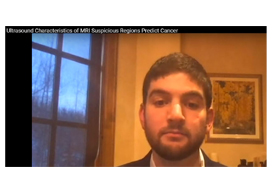Video: Prostatic capsular incision during RP has important oncological implications. A systematic review and meta‐analysis
Prostatic capsular incision during radical prostatectomy has important oncological implications. A systematic review and meta‐analysis
Abstract
Introduction
Capsular Incision (CapI) is an iatrogenic breach of the prostatic capsule during radical prostatectomy that can cause positive surgical margins (PSM) in organ‐confined (pT2) prostate cancer (PCa), or the retention of benign prostatic tissue. We systematically interrogated the literature in order to clarify the definition of CapI, and the implications of this event for rates of PSM and biochemical recurrence (BCR).
Methods
A literature search was conducted according to PRISMA criteria using the search terms ‘CapI’ AND ‘prostatectomy’ and variations of each. 18 studies were eligible for inclusion.
Results
A total of 51,057 radical prostatectomy specimens were included. The incidence of CapI ranged from 1.3‐54.3%. CapI definitions varied, and included a breach of the prostatic capsule “exposing both benign or malignant PCa cells”, “malignant tissue only”, or “benign tissue only”. The incidence of PSM due to CapI ranged from 2.8 – 71.7%. Our meta‐analysis results found that when CapI was defined as “exposing malignant tissue only in organ‐confined prostate cancer” there was an increased risk of BCR compared to patients with pT2 disease and no CapI (RR 3.53, 95%CI 2.82‐4.41; p < 0.00001).
Conclusions
The absolute impact of CapI on oncological outcomes is currently unclear due to inconsistent definitions. However, the data implies an association between CapI and PSM and BCR. Reporting of possible areas of CapI on the operation note, or marking areas of concern on the specimen, are critical to assist CapI recognition by the pathologist.










